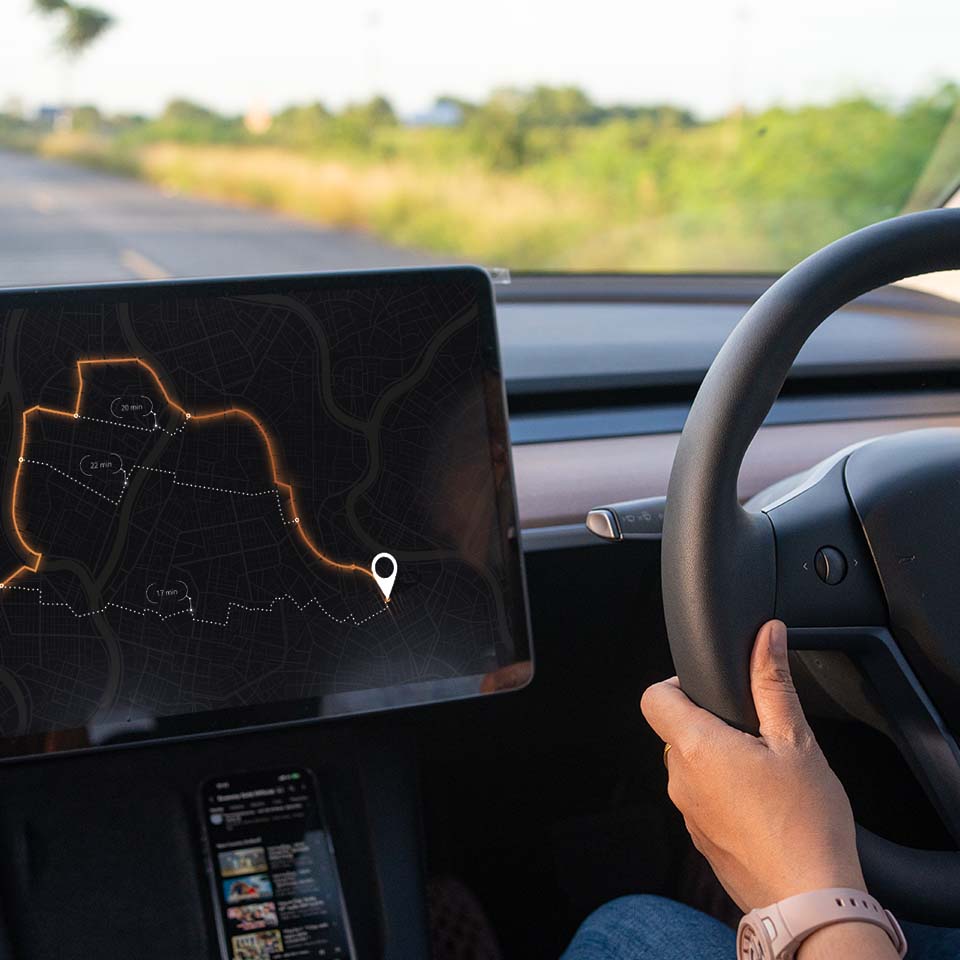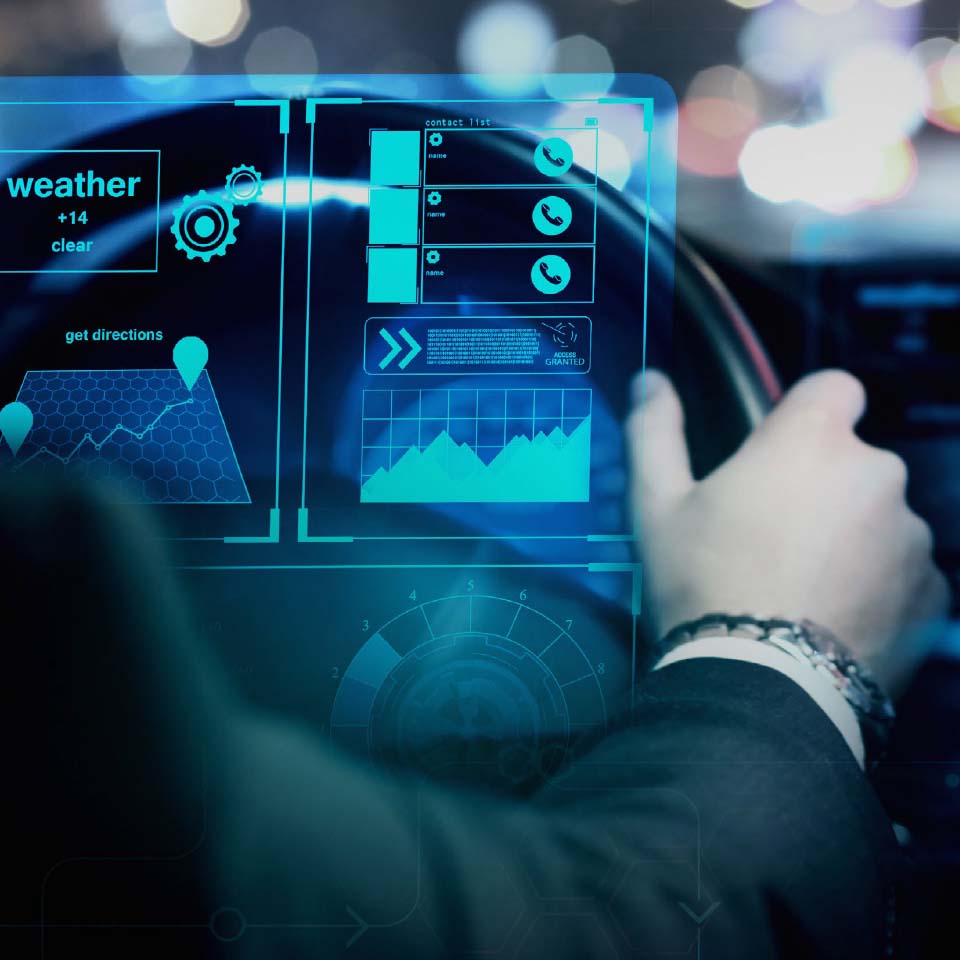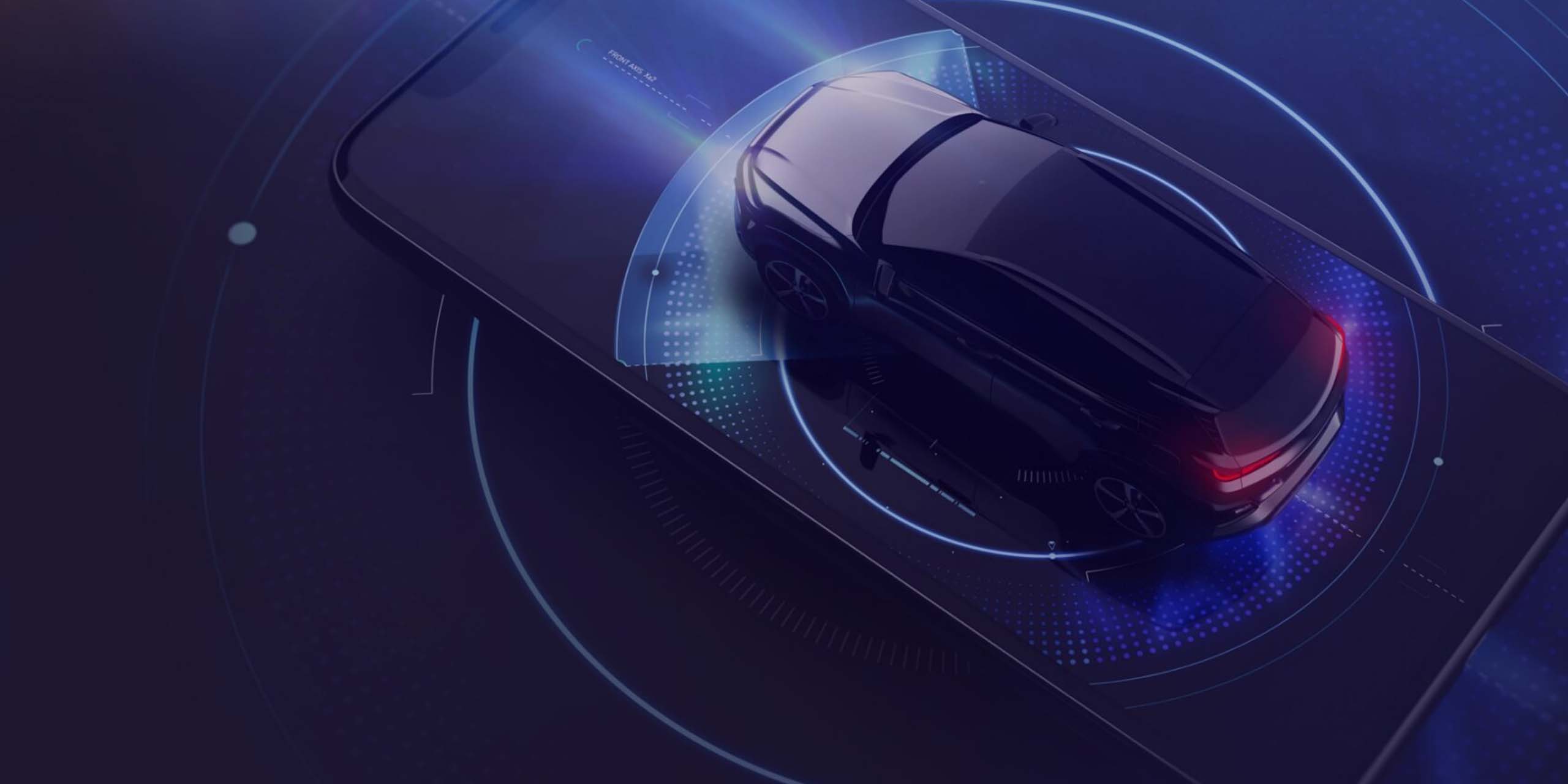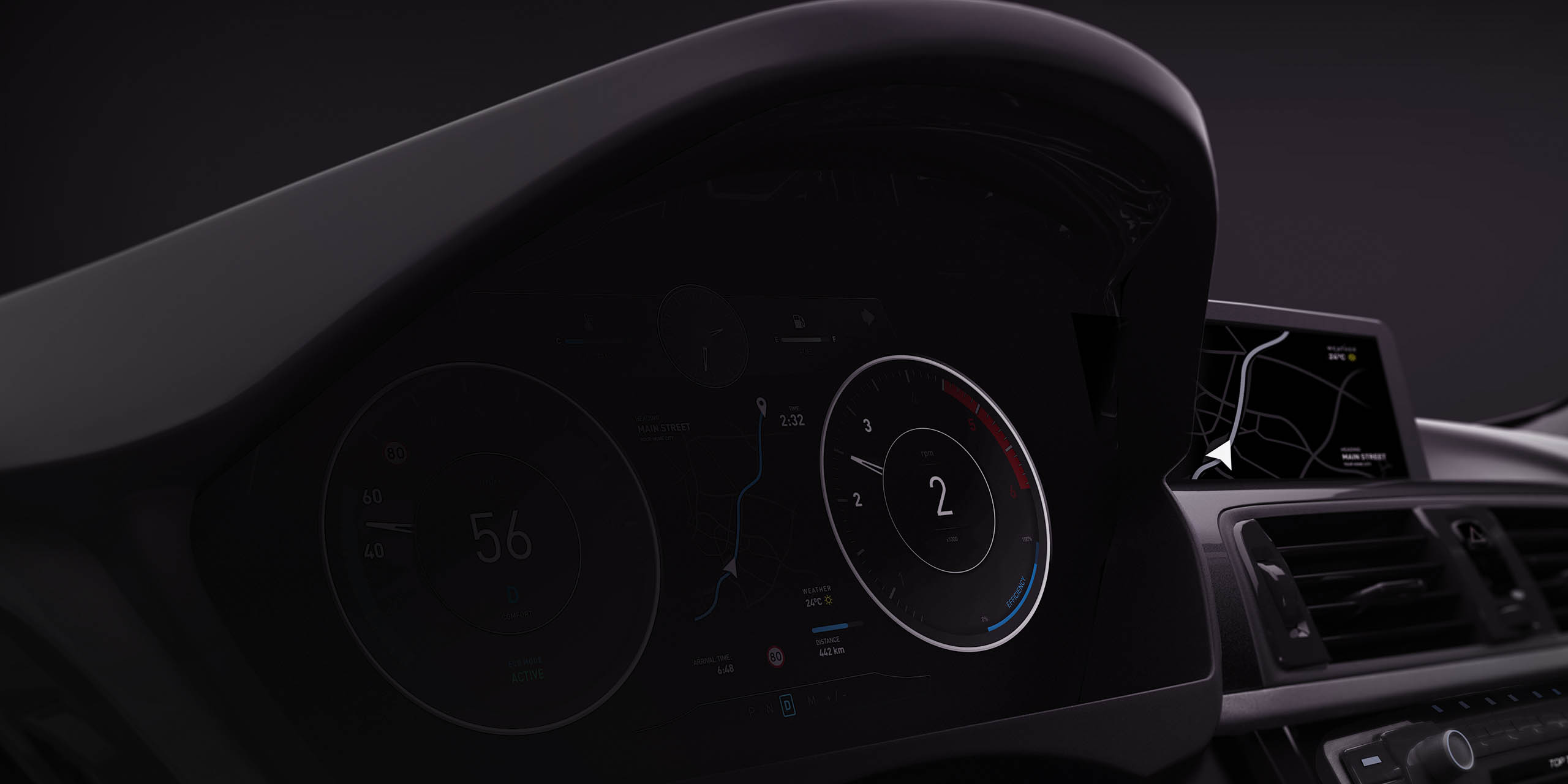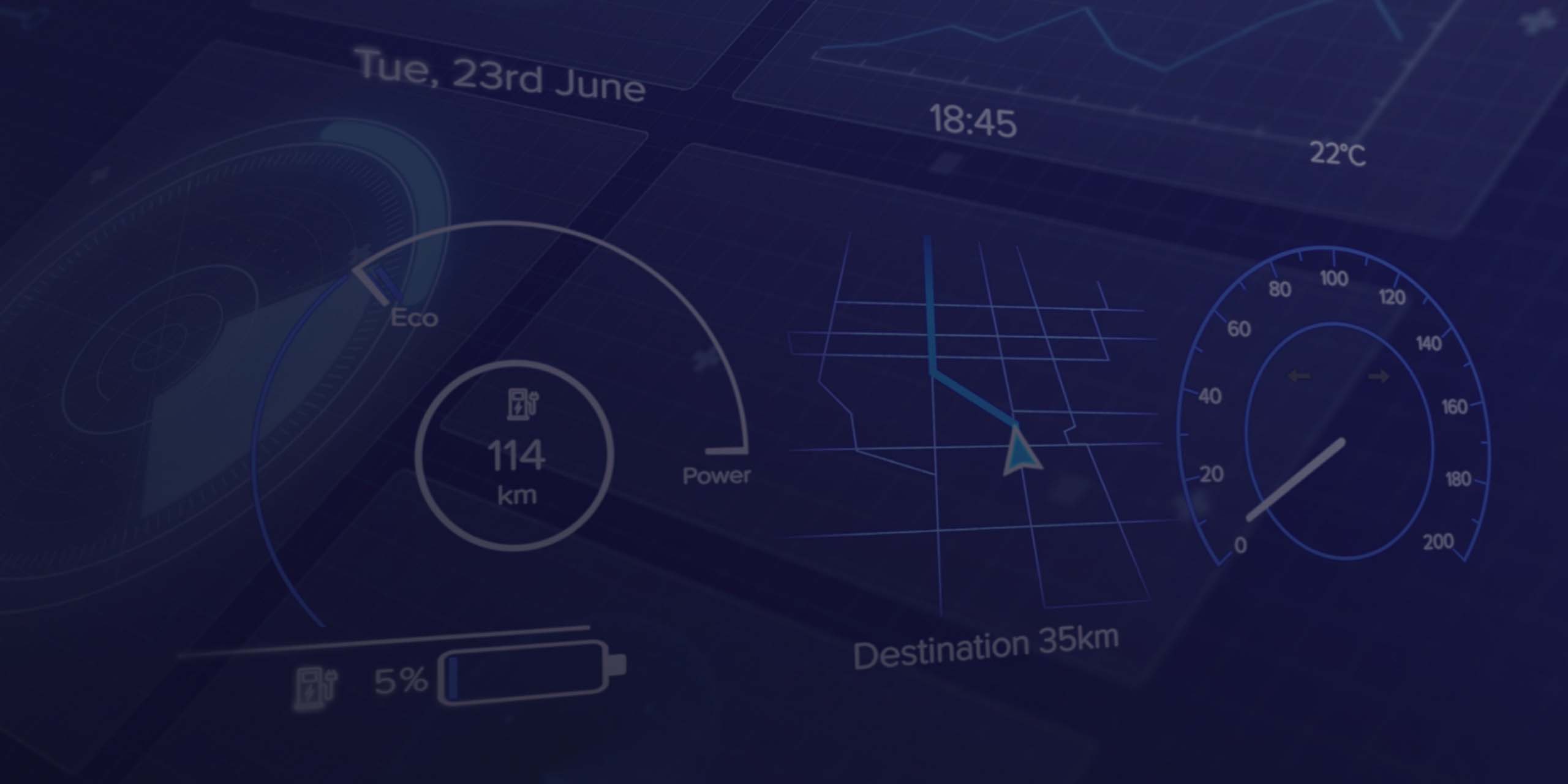In brief
- Recently, Google’s Android Automotive Operating System (AAOS) increased its market share as an open source alternative. Once OEMs decide to use AAOS, a question arises: Should they go with GAS or not?
- Google Automotive Services (GAS), a set of ready-made extensions, brings some advantages, but also disadvantages. The market shows that both alternatives are almost equally attractive
- Finding the best configuration for an Android-based automotive system is not an easy task. This blog post will help you find the solution that is best for you
In the world of automotive operating systems, one open-source option is becoming increasingly popular: Android Automotive Operating System (AAOS). It comes in two flavors: With or without Google Automotive Services (GAS). Either way, it has become the next-generation in-vehicle infotainment (IVI) platform of choice for most OEMs. AAOS and its use for IVI systems is likely to grow further and will revolutionize how users interact with their vehicle, making vehicles smarter and ready for the future.
But should OEMs go for GAS or not?
Android Auto, Android Automotive OS, GAS — clarification of terms
Here’s a quick refresher of some of the terms that usually pop up when Android and vehicles are discussed:
- Android
An open-source operating system and software platform developed by Google. It’s widely used on phones and other mobile devices
- AAOS
An open-source operating system optimized for automotive use. It’s developed and maintained by Google
- Android Auto
A technology that allows you to use your Android phone within the infotainment system of a car. If the car supports Android Auto, you just connect your phone (via cable or Bluetooth). Then, an additional menu appears on the screen of your car. It’s similar to technologies like Apple CarPlay and MirrorLink
- Google Automotive Services (GAS)
An optional add-on for AAOS, providing Google PlayStore, Google Assistant and Google Maps. GAS must be licensed and therefore creates additional costs for automakers
To be clear: Other operating systems and integration solutions are available and widely used, like Linux and many proprietary products. But in this blog, we’re only asking to GAS or not to GAS? That is the question.

Figure 1: The rugged landscape of operating systems for IVIs. The purple part shows the scope of this blog post.
AAOS, the next-generation IVI platform
AAOS is an operating system (OS) built for IVI systems. It extends the Android Open Source Project (AOSP) that powers more than 70% of mobile phones around the globe, and adds basic infotainment features like maps, media and dialer to IVI systems. With its Android Car API framework, it also provides connectivity to vehicle data systems.
Not so long ago, AAOS was rejected by OEMs for a number of reasons. The most pressing being:
- Missing vehicle security
- Lack of OEM branding
- Long booting time
- The redundancy of many applications
Then why has AAOS now become a hot candidate for next-generation OS for IVI systems? Yes, the above issues have been addressed, but what it really comes down to is end-user demands. Customers know Android applications from their mobile phones, and they want to find the same applications in their cars. They want to seamlessly switch between devices (phone and car) to have a continuous, unified look and feel, which includes a personalized in-vehicle experience.
Until recently, this experience was missing from infotainment systems: They just provided basic functionality like navigation and media in an old-fashioned way, without connecting to the outside world.
Market trends
Since the introduction of AAOS with Volvo’s Polestar 2, Android Automotive has caused a stir in the infotainment platforms market, which was hitherto governed by Linux-based platforms or other HMI engines.
A recent Strategy Analytics study has shown the rise of Android Automotive as the target operating system for IVI platforms. If this trend continues, Android Automotive will capture the automotive market in the same way Android did the mobile phone industry. Zoreza Global has noted that 10 out of 15 OEMs have already selected Android Automotive as their next-generation infotainment platform.

Figure 2: The most common operating systems of automotive IVIs

Figure 3: OEMs and their vehicles with and without GAS
Google Automotive Services (GAS)
Google created GAS, a framework on top of Android Automotive. It adds Google’s user-friendly apps and services — e.g., Google Maps, Google Assistant and the Play Store — to the system. Like Google Mobile Services (GMS), GAS also brings in the power of Android to get the best out of the AOSP framework, but it’s not the same package of apps and services as GMS for Android mobile phones and tablets.
GAS is a set of Google-proprietary apps and services made for cars, with driver distraction guidelines and UX restrictions kept in mind, for example, restricting access to applications that may be distracting. The major application of GAS is Google Maps, which is widely used across the globe in the mobility industry and is also used in vehicles that use Android Auto. The GAS Play Store is the new white-labeled app store built for cars. The store offers a set of template-based applications and the ability to install new applications. Additionally, the GAS apps can interact with the vehicle framework, which enables new vehicle-based applications — like heating, ventilation and air conditioning control (HVAC), or event-based vision sensor (EVS) camera systems. GAS also allows hands-free control using Google Assistant.
GAS-based apps are created using AAOS UX design principles, Google templates and Android Automotive components, with the latter already implemented in the Car UI library of Android Automotive. This ensures that all apps in the GAS Play Store comply with driver-distraction regulations.
Currently, the GAS Play Store offers media- and navigation-based applications. But as soon as OEMs have their Android-based platforms on the road, it’s expected that a vast number of new applications of all kinds will be added to the store.
Reasons for OEMs to select GAS
Despite its license costs, the following reasons are strong arguments to opt for GAS:
- Homogenized apps for end-users
The consistent look and feel of apps is guaranteed with GAS, making it easy for customers to switch from their phone environment to their car environment
- One platform for major apps like Google Maps, Spotify, etc.
The interaction with the different apps on the IVI system feels seamless
- Carefree updates
Google support with the latest updates eliminates the need for proprietary solutions
- One provider
Google is the only provider of all the services. No need to align with each third-party provider of system parts
- Future-proof Play Store
Hosting new apps is easy and secure, because the Google Play Store is an integrated part of GAS
- Android Car App Library support
A mechanism an OEM can use to perform their own HMI-customization of third-party applications
- Android bootcamp partnership
An event where Android provides partners with the latest news and updates on Android Automotive
Reasons for OEMs not to select GAS
Saving on license fees is not the only reason for OEMs to decide against GAS. Other considerations might even carry more weight:
- Losing or diminishing OEM branding
With the Google-dictated look-and-feel, car brands lose some control of their iconic and individual style. As this may be a strong distinguishing feature for a brand, opting for non-GAS might be the only way to maintain brand identity
- Securing user data
If user behavior and usage data should not be shared with Google, OEMs have to avoid the use of GAS-services
- Avoiding GAS certification
Using GAS necessitates passing the Googles certification process which spells additional efforts
- Deviating hardware requirements
Google has defined specific hardware requirements in their compatibility definition document (CDD). This can be a cost-driving factor if hardware has to be replaced to match Google’s requirements
- Implementing own app store
OEMs that have their own app store have to step away from GAS to continue with their own store
The way out of the dilemma
Let’s come back to the initial question: To GAS or not to GAS? The answer is simple and may sound trivial, but there lies a deeper truth behind it — you have to make an informed decision.
Having read this blog post up to this point, you should now have a good impression of the advantages and disadvantages connected with GAS. With an honest analysis of your own ecosystem, hardware platform, brand strategy and other business-related objectives, the final decision can only be an individual one. But you’re not alone: Zoreza Global’s advisory experts can help you with a thorough analysis and shared insights. We’re working for clients with both GAS and non-GAS systems — giving us firsthand experience and a deep understanding of both approaches.
Based on your decision to go Android with or without GAS, we provide services curated for your way of working. If clients select GAS, we support in CDD and certification. If clients don’t select GAS, we provide alternate ways to be in line with Android development and integrations of apps and app stores.
So, no matter which direction you go, we can accompany you on your Android Automotive journey. Contact us to discuss your route.



